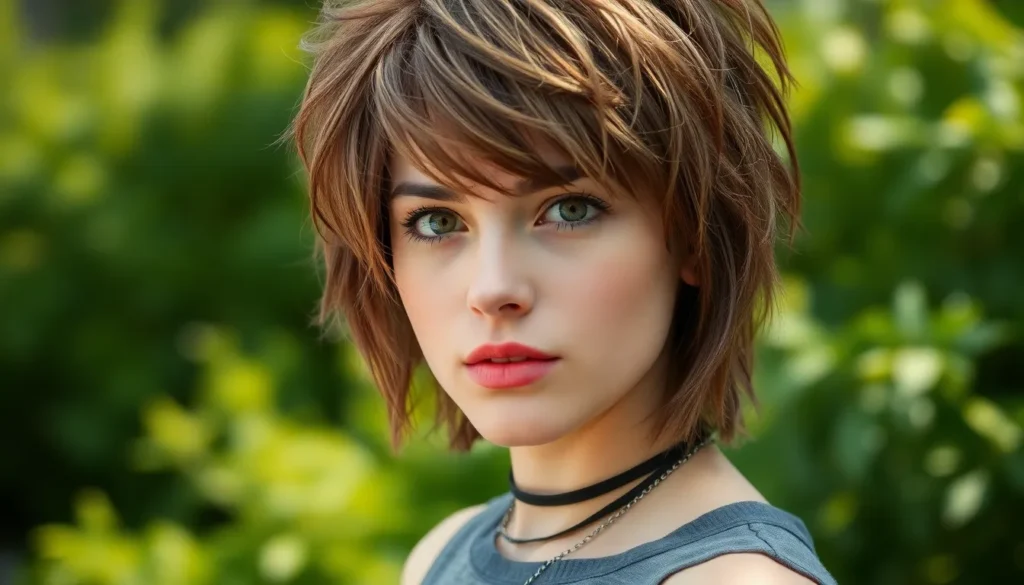The shaggy mullet is making an explosive comeback and we’re absolutely here for it. This edgy hairstyle combines the classic mullet’s “business in front party in back” philosophy with modern textural elements that create effortless cool. What sets the shaggy mullet apart is its deliberately messy layered approach that adds volume movement and rebellious charm to your look.
We’ve watched this trend evolve from its retro roots into today’s most sought-after cut among celebrities influencers and style-forward individuals. The shaggy mullet isn’t just about nostalgia – it’s a statement piece that screams confidence and individuality. Whether you’re ready to embrace your wild side or simply want a low-maintenance style that turns heads this versatile cut delivers maximum impact.
Ready to discover why the shaggy mullet is dominating salons worldwide? We’ll guide you through everything you need to know about this game-changing hairstyle that’s redefining modern hair trends.
What Is a Shaggy Mullet and Why Is It Trending
Definition combines two distinct hair concepts that create an unmistakable modern look. We’re talking about a hairstyle that merges the layered, tousled texture of a shag cut with the distinctive length variation of a traditional mullet. Business stays shorter in the front and sides while party length extends down the back and nape area.
Texture becomes the defining characteristic of this contemporary variation. Layers throughout the cut create natural movement and volume that traditional mullets often lack. Choppy ends and feathered sections add dimension that makes the style appear effortlessly undone rather than precisely sculpted.
Social media platforms drive the current surge in shaggy mullet popularity. TikTok hashtags featuring shaggy mullet content have accumulated over 50 million views since 2025. Instagram influencers showcase various interpretations of the style, from subtle modern versions to bold statement cuts that command attention.
Celebrity endorsements accelerate mainstream adoption of this edgy hairstyle choice. Miley Cyrus, Billie Eilish, and Kristen Stewart have all sported variations of the shaggy mullet on red carpets and in music videos. Their high profile appearances normalize the look and inspire fans to request similar cuts from their stylists.
Gender neutral appeal broadens the trend’s reach across diverse demographics. Unlike traditional mullets that often carried masculine associations, shaggy mullets work equally well on all hair types and personal styles. Fashion forward individuals use the cut to express creativity and break free from conventional beauty standards.
Versatility makes the shaggy mullet practical for various lifestyles and professional environments. Styling options range from sleek and polished for office settings to wild and textured for casual occasions. This adaptability explains why busy professionals and creative types alike embrace the trend.
The History and Evolution of the Shaggy Mullet Hairstyle
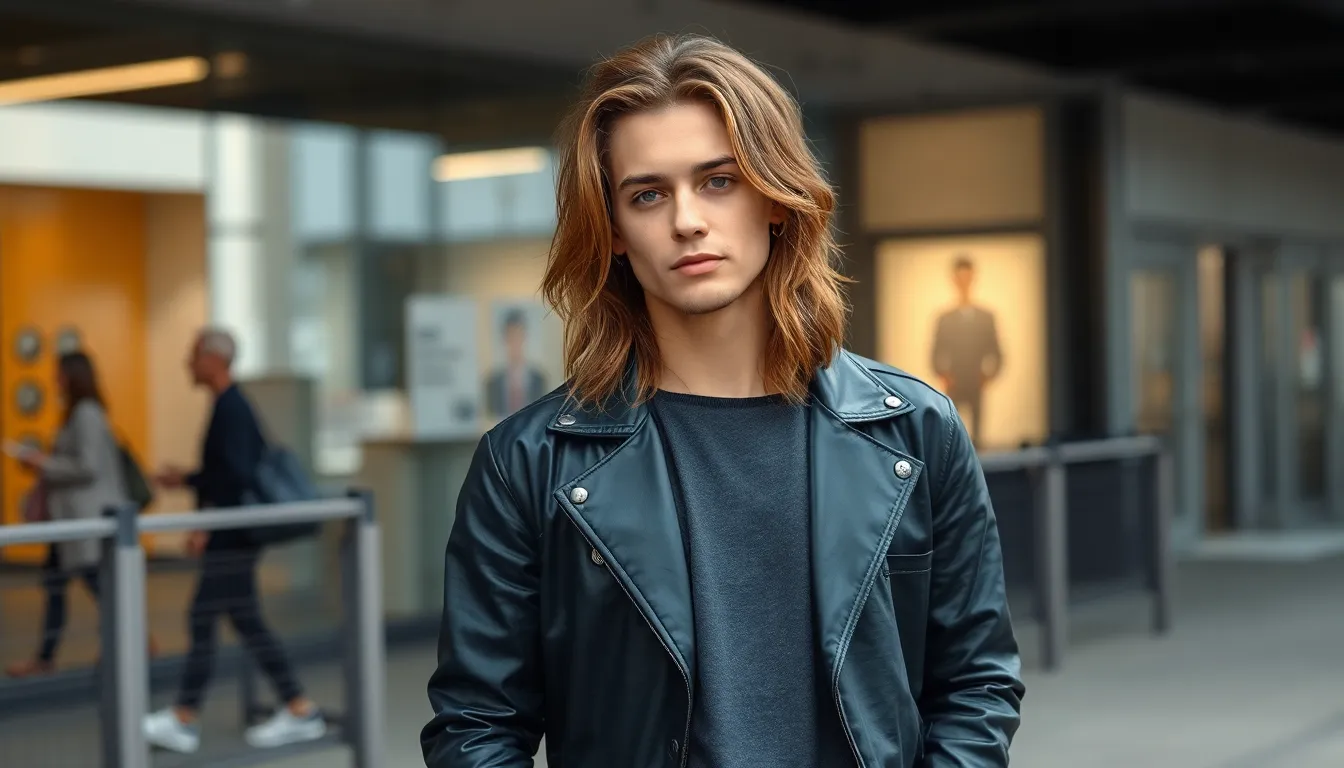
Origins trace back to the 1970s when hairstylists began experimenting with asymmetrical cuts that challenged traditional hair length conventions. David Bowie’s iconic Ziggy Stardust era popularized dramatic length variations, while musicians like Rod Stewart and Paul McCartney showcased early mullet interpretations that would influence decades of hair trends.
Rock culture embraced the mullet throughout the 1980s, transforming it from a subtle style statement into a bold declaration of rebellion. Athletes like hockey players adopted the cut as their signature look, earning it the nickname “hockey hair” and cementing its association with toughness and nonconformity. Country music stars such as Billy Ray Cyrus brought the mullet into mainstream American culture, making it a symbol of working class pride.
Fashion designers began incorporating shag elements into traditional mullets during the late 1980s and early 1990s, creating more textured and layered versions. Celebrity hairstylists like Vidal Sassoon and John Frieda experimented with choppy cutting techniques that added movement and dimension to the classic business front, party back formula. These innovations laid the groundwork for what we now recognize as the modern shaggy mullet.
Grunge movement of the 1990s temporarily shifted focus away from structured mullets toward more disheveled, unkempt styles. Alternative rock musicians favored longer, straggly hair that emphasized authenticity over polished appearance. This period saw the emergence of softer, more natural looking mullet variations that prioritized texture over precise geometric shapes.
Revival began in the late 2010s when fashion runways started featuring models with updated mullet styles that incorporated contemporary cutting techniques. Hairstylists began blending traditional mullet proportions with modern shag layering methods, creating hybrid cuts that felt both nostalgic and fresh. Social media platforms accelerated this comeback by showcasing diverse interpretations from professional salons and home stylists alike.
Contemporary shaggy mullets differ significantly from their predecessors through advanced texturizing methods and personalized styling approaches. Today’s versions feature softer transitions between lengths, more subtle layering, and greater emphasis on natural hair movement. Professional colorists now pair shaggy mullets with balayage highlights and dimensional toning that enhance the cut’s inherent texture and depth.
Key Characteristics That Define a Modern Shaggy Mullet
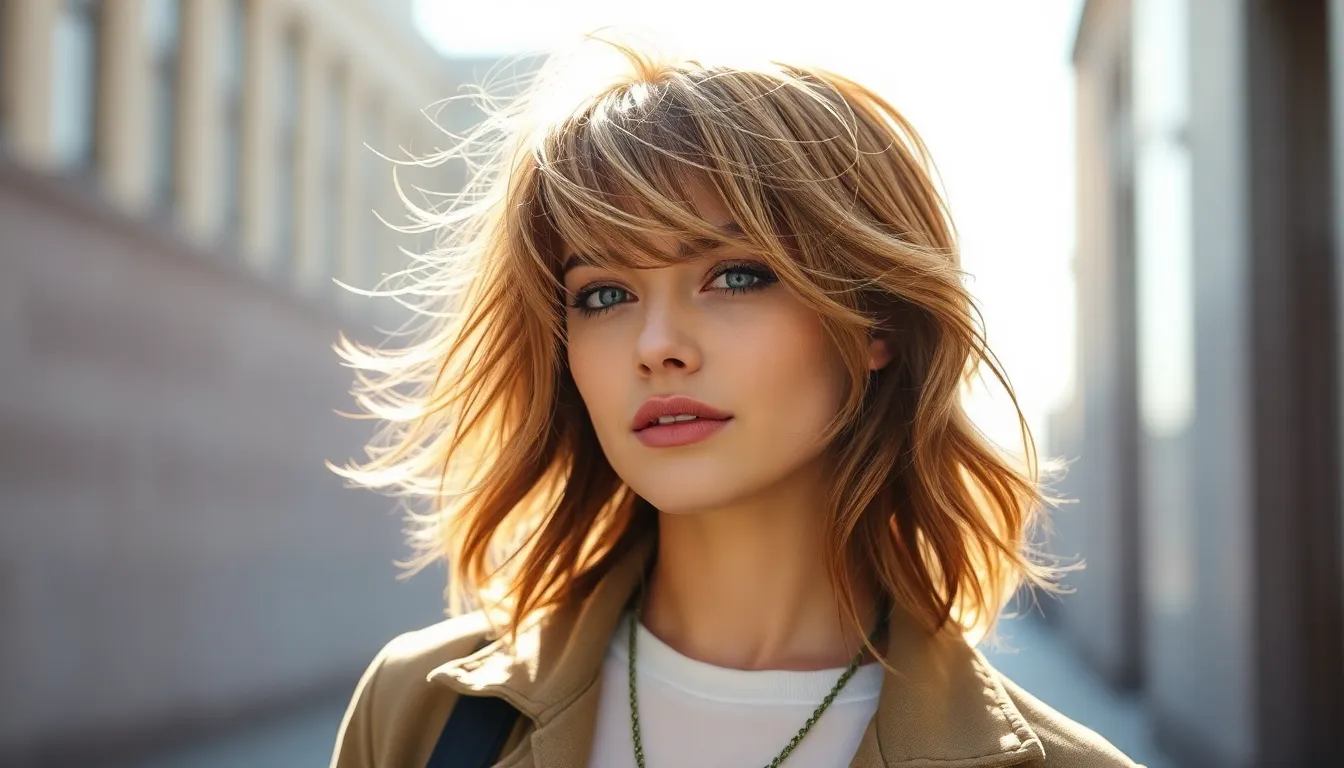
The modern shaggy mullet distinguishes itself through three fundamental elements that create its signature rebellious yet refined appearance. We’ll explore how these defining features work together to achieve the perfect balance between edgy and wearable.
Layered Texture and Movement
Choppy layers form the foundation of every successful shaggy mullet, creating natural volume and effortless movement throughout the hair. Stylists achieve this textured look by cutting at various angles and lengths, incorporating razor techniques that produce feathered ends rather than blunt cuts. The layers typically start around the ears and become more pronounced toward the back, giving the hair a lived-in appearance that moves naturally with daily activities.
Tousled texture emerges through strategic point cutting and slide cutting techniques that remove weight while maintaining length. These methods create piece-y separation between sections, allowing individual strands to catch light differently and enhance the overall dimensional effect. The result mimics the natural texture of wind-swept hair without requiring extensive daily styling.
Modern cutting techniques now incorporate dry cutting methods that allow stylists to see exactly how the hair falls naturally. This approach ensures the layers complement the client’s natural hair pattern and face shape, creating movement that enhances rather than fights against their hair’s inherent characteristics.
Length Variation Between Front and Back
Contemporary shaggy mullets feature more subtle length transitions compared to their dramatic 1980s predecessors, with the back section typically measuring 2-4 inches longer than the front and sides. The graduation occurs gradually through expertly blended layers that create a seamless flow from shorter to longer sections. This refined approach makes the style more versatile for professional environments while maintaining the mullet’s characteristic silhouette.
Front sections usually fall between chin and shoulder length, depending on face shape and personal preference. The sides maintain similar lengths to the front or slightly shorter, creating a balanced frame around the face. Back lengths can extend past the shoulders but rarely exceed mid-back length in modern interpretations.
Stylists create these length variations using elevation techniques that lift sections of hair at exact angles during cutting. The process involves careful sectioning and measuring to ensure symmetry while allowing for natural asymmetrical elements that enhance the shag’s organic feel.
Face-Framing Pieces and Bangs
Curtain bangs represent the most popular fringe option for modern shaggy mullets, parting naturally in the center and sweeping gently to each side of the face. These soft, wispy bangs blend seamlessly into the face-framing layers, creating a cohesive look that flatters most face shapes. The length typically grazes the eyebrows or sits just below them, allowing for easy styling versatility.
Face-framing layers start at the bangs and gradually increase in length as they move toward the ears and jawline. These pieces curve slightly inward toward the face, creating a flattering silhouette that softens angular features and adds width to narrower face shapes. The layers incorporate subtle graduation that prevents harsh lines while maintaining definition.
Micro bangs offer an alternative for those seeking a more dramatic statement, sitting well above the eyebrows and creating bold contrast with the longer sections. Side-swept bangs provide another option, particularly effective for asymmetrical face shapes or those wanting to minimize forehead width. Each bang style requires exact cutting techniques and regular maintenance to preserve the intended shape and proportion.
Different Types of Shaggy Mullet Styles to Consider
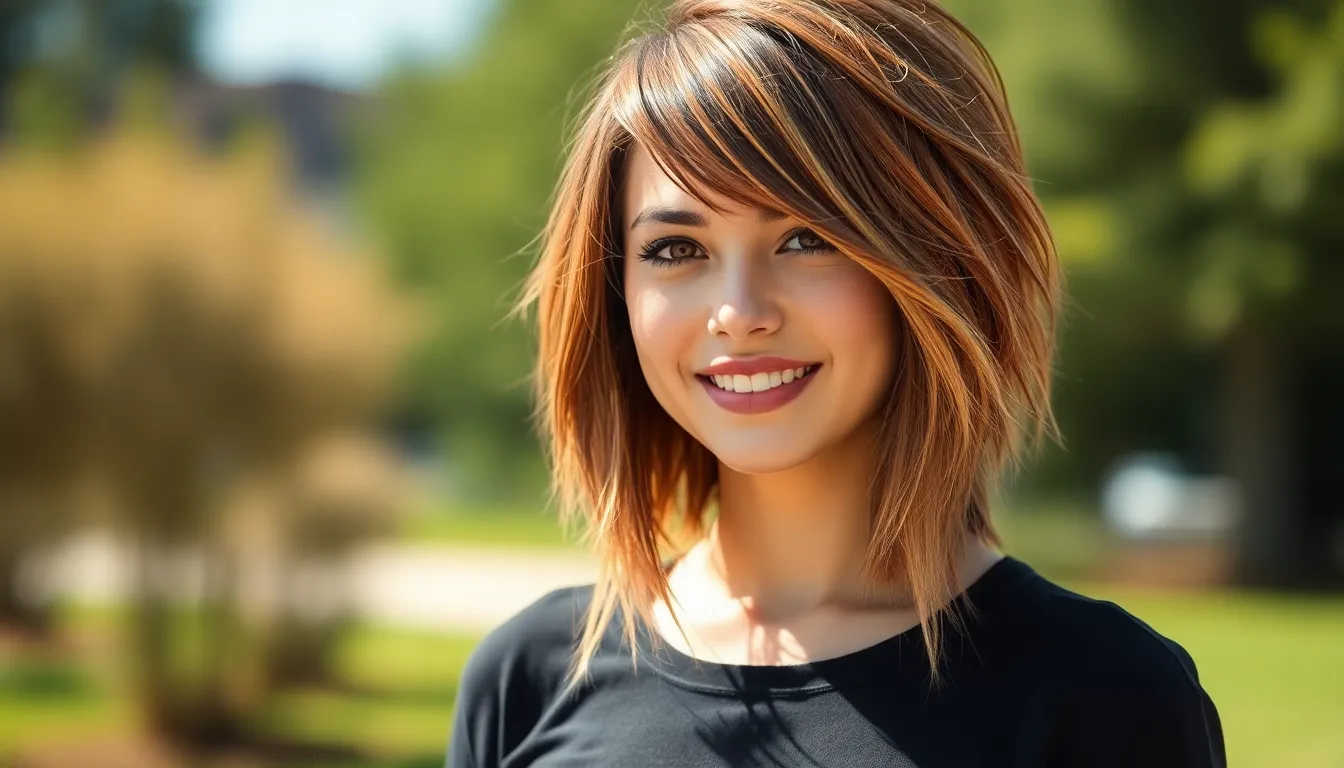
We’ve explored the foundational elements of the shaggy mullet, and now it’s time to examine the exact variations that make this hairstyle so versatile. Each style offers unique characteristics that cater to different face shapes, hair textures, and personal preferences.
Classic Shaggy Mullet
Classic shaggy mullets capture the original spirit of 1970s rock culture with dramatic length differences between front and back sections. We see this style featuring heavy layering throughout the crown and sides, creating maximum volume and texture that defines the traditional mullet silhouette. Feathered pieces frame the face while maintaining the signature “business in front, party in back” proportions that made this cut famous.
Styling products like texturizing spray and sea salt mist enhance the natural movement in classic shaggy mullets. We recommend this variation for those seeking an authentic retro vibe with bold statement appeal. The classic approach works best on medium to thick hair types that can support the weight and volume requirements of the traditional layered structure.
Modern Shaggy Mullet
Modern shaggy mullets blend contemporary cutting techniques with subtle proportions that create a more refined interpretation of the classic style. We notice softer transitions between lengths and strategic layering that maintains the mullet shape without extreme contrast. Face framing layers and curtain bangs add sophistication while preserving the edgy character that defines shaggy mullet aesthetics.
Balayage highlights and lowlights enhance the dimensional quality of modern shaggy mullets, emphasizing the layered texture. We find this style particularly appealing for professional environments where a polished yet trendy appearance is desired. The modern approach adapts well to various styling methods, from sleek and straight to tousled and textured finishes.
Curly Shaggy Mullet
Curly shaggy mullets embrace natural texture while incorporating the length variation that characterizes mullet cuts. We see this style working exceptionally well with type 2B to 3C curl patterns, where the natural volume creates organic movement throughout the layers. Specialized cutting techniques for curly hair ensure proper weight distribution and prevent the dreaded triangle shape.
Curl improving creams and lightweight gels help define the texture in curly shaggy mullets without weighing down the natural bounce. We recommend this variation for those with naturally curly or wavy hair who want to embrace their texture while achieving a fashion forward look. The curly approach requires minimal daily styling and celebrates the natural movement that makes each curl pattern unique.
Short Shaggy Mullet
Short shaggy mullets offer a more subtle take on the traditional proportions with overall lengths that rarely extend past the shoulders. We observe this style featuring choppy layers concentrated around the crown and nape, creating texture and movement without excessive length in the back section. The shorter variation maintains the mullet silhouette while providing easier maintenance and versatility for active lifestyles.
Pomades and texturizing pastes work well for styling short shaggy mullets, allowing for both messy and polished looks. We find this option perfect for those transitioning from longer styles or seeking the mullet aesthetic with professional requirements. The short approach adapts to various face shapes and hair densities, making it one of the most accessible shaggy mullet variations.
How to Ask Your Stylist for the Perfect Shaggy Mullet
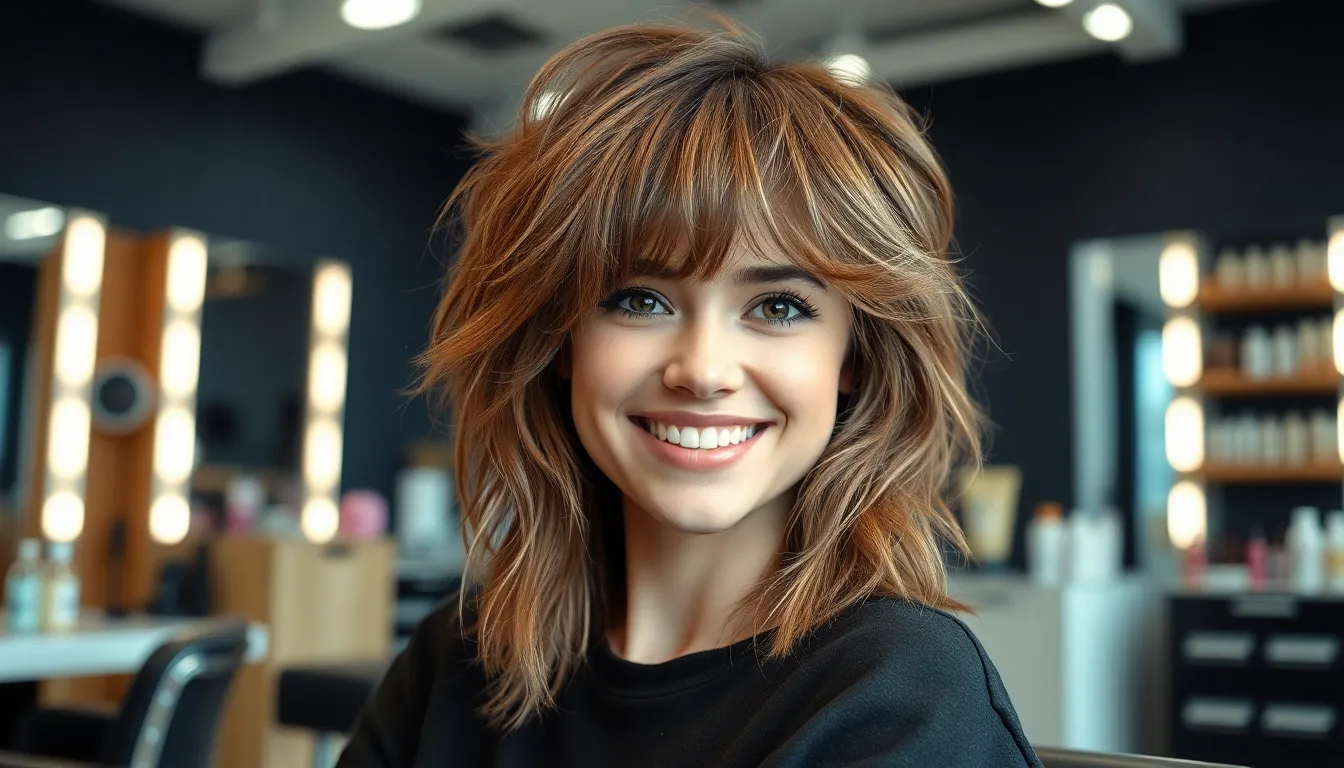
Getting the perfect shaggy mullet requires clear communication with your stylist about your vision and expectations. We’ll guide you through the essential steps to ensure you walk out with the exact look you’re dreaming of.
Bringing Reference Photos
Collect multiple images that showcase different angles of your desired shaggy mullet style. Instagram posts, Pinterest boards, and celebrity photos provide excellent visual references that help your stylist understand the exact texture and length variations you want. Save at least 3-5 photos that demonstrate the front view, side profile, and back length to give your stylist a complete picture.
Show photos of styles you don’t want alongside your preferred looks to eliminate any confusion. These negative examples help clarify boundaries and prevent miscommunication about elements like extreme length differences or overly choppy textures. Include images of similar hair types to yours when possible, as this helps your stylist visualize how the cut will work with your natural texture and density.
Screenshot styling examples that demonstrate how you plan to wear your shaggy mullet daily. Different styling approaches can dramatically change the final appearance, so showing both tousled casual looks and sleeker professional versions helps your stylist create the right foundation cut.
Discussing Face Shape Compatibility
Round faces benefit from longer front pieces that create vertical lines and draw attention downward. The shaggy mullet’s face-framing layers should start below the chin to elongate your features, while the textured back adds width where it’s needed. Request side-swept bangs rather than straight-across fringe to avoid emphasizing the width of your face.
Square faces work well with softer, feathered layers that break up angular jawlines. Ask your stylist to focus on creating wispy, irregular pieces around your temples and cheekbones rather than blunt lines that emphasize geometric features. Discuss curtain bangs that part in the middle and sweep to either side, as these create curves that complement strong jaw structures.
Heart-shaped faces should emphasize the lower portion of the cut to balance a wider forehead. Request fuller layers at chin level and below, while keeping the crown area less voluminous to avoid top-heavy proportions. Consider micro bangs that partially cover your forehead without completely hiding it, creating better facial balance.
Oval faces have flexibility with most shaggy mullet variations, but discuss which features you’d like to highlight or minimize. Long face shapes can handle more horizontal volume through wider layers, while shorter oval faces benefit from vertical elements that elongate.
Setting Realistic Expectations
Understand the maintenance commitment before making the appointment, as shaggy mullets require regular trims every 6-8 weeks to maintain their shape. The textured layers grow out unevenly, and the distinctive length variation can become unbalanced without consistent professional maintenance. Budget for monthly styling products like texturizing sprays, sea salt mists, and lightweight oils that enhance the cut’s natural movement.
Discuss your styling routine honestly with your stylist to ensure the cut matches your daily habits. If you prefer wash-and-go simplicity, request looser layers that air-dry well, while those who enjoy heat styling can handle more dramatic texture variations. Ask about styling time requirements and whether you’ll need new tools or techniques to achieve your desired daily look.
Consider your workplace policies and lifestyle demands when determining the final length and texture intensity. Some professional environments may require more conservative interpretations, while creative fields often welcome bolder expressions. Plan for a transition period of 2-3 weeks as you learn to style your new cut and as the layers settle into their natural patterns.
Be prepared for compliments and questions about your bold hair choice, as shaggy mullets definitely make a statement. The unique silhouette draws attention and often sparks conversations, so ensure you’re comfortable with the increased visibility this trendy cut brings.
Styling Tips and Techniques for Your Shaggy Mullet

Mastering the art of styling your shaggy mullet transforms this edgy cut into a versatile statement piece. We’ll guide you through proven techniques that enhance texture while maintaining the rebellious charm that makes this hairstyle so captivating.
Essential Hair Products for Texture
Texturizing sprays form the foundation of every well-styled shaggy mullet routine. Sea salt sprays like Bumble and Bumble Surf Spray create natural grit and enhance the choppy layers that define this cut. We recommend applying these products to damp hair for maximum absorption and lasting hold.
Lightweight styling creams prevent frizz without weighing down your shaggy mullet’s natural movement. Products containing argan oil or coconut oil nourish while defining individual layers. Avoid heavy conditioners that can flatten the textured sections and diminish the cut’s signature volume.
Dry shampoo serves dual purposes by adding grip and extending time between washes. Brands like Batiste and Living Proof create the perfect amount of texture for finger-combing through your mullet’s layers. We suggest focusing application on the crown area where oil buildup typically occurs first.
Heat protectant sprays safeguard your hair during styling sessions with blow dryers or diffusers. Look for formulas that offer thermal protection up to 450°F while maintaining flexibility in your styled look. These products prevent damage that could compromise your shaggy mullet’s health and appearance.
Daily Styling Routine
Morning preparation begins with slightly damp hair for optimal product distribution. We recommend misting your shaggy mullet with water rather than soaking it completely. This approach activates styling products without creating excessive moisture that leads to longer drying times.
Applying texturizing cream starts at the mid-lengths and works toward the ends of your hair. Focus on the longer back sections where your mullet’s length variation is most pronounced. We suggest using a quarter-sized amount and distributing it evenly through your fingers before touching your hair.
Scrunching motions enhance your shaggy mullet’s natural texture while encouraging curl formation. Work from the bottom up, gently squeezing sections of hair in your palms. This technique activates the choppy layers and creates the effortless movement that defines this hairstyle.
Air drying produces the most natural-looking results for most shaggy mullet styles. We recommend allowing 80% air drying before using any heat tools. This method preserves your hair’s natural texture while reducing heat damage that can dull your cut’s edgy appearance.
Creating Volume and Movement
Root lifting techniques amplify your shaggy mullet’s natural body at the crown. Flip your head upside down while blow drying on low heat settings. We suggest using a diffuser attachment to distribute airflow evenly and prevent frizz formation in your textured layers.
Finger styling replaces traditional brushing for maintaining your shaggy mullet’s intentionally messy appearance. Run your fingers through damp hair to separate layers and create natural-looking separation. This method preserves the choppy texture that makes your mullet appear effortlessly cool.
Strategic product placement maximizes volume in key areas of your shaggy mullet. Apply volumizing mousse specifically to your roots and crown sections before styling. We recommend avoiding the ends to prevent weighing down the longer back portions of your cut.
Finishing techniques lock in your desired look while maintaining flexibility throughout the day. Light hairspray applications from 12 inches away preserve movement while providing hold. We suggest choosing flexible-hold formulas that allow you to reshape your shaggy mullet as needed without stiffness.
Maintenance and Upkeep for Shaggy Mullet Hair

Keeping your shaggy mullet looking fresh and textured requires consistent care and regular professional touch-ups. We’ll guide you through the essential maintenance routines that preserve the style’s signature messy layers and rebellious charm.
Recommended Trim Schedule
Schedule appointments every 6 to 8 weeks to maintain your shaggy mullet’s shape and prevent the layers from growing out unevenly. Frequent trims preserve the distinctive length variation between the front and back sections while keeping choppy ends looking intentional rather than damaged.
Book mini sessions every 3 to 4 weeks if you have fast-growing hair or want to maintain extremely defined layers. These shorter appointments focus on cleaning up the perimeter and refreshing face-framing pieces without altering the overall structure.
Plan seasonal refreshes during spring and fall when you might want to adjust the length or add new textural elements. These sessions allow your stylist to evaluate how the cut has evolved with your hair’s natural growth patterns and make necessary modifications.
Consider your hair type when planning trim frequency, as fine hair typically needs more frequent maintenance every 4 to 6 weeks, while thicker hair can often go 8 to 10 weeks between appointments.
At-Home Care Tips
Wash your shaggy mullet 2 to 3 times per week using sulfate-free shampoo to prevent stripping natural oils that enhance the style’s tousled texture. Overwashing can make the layers appear flat and lifeless, working against the cut’s inherently messy aesthetic.
Apply texturizing products to damp hair immediately after washing, focusing on mid-lengths and ends where the shag layers create the most movement. Scrunch the product through your hair using your hands rather than brushing to maintain the natural, disheveled appearance.
Sleep on silk or satin pillowcases to reduce friction that can cause frizz and flatten the carefully crafted layers. This simple switch helps preserve your styling efforts and reduces morning touch-up time.
Use dry shampoo strategically on non-wash days to add grit and texture to the roots, which enhances volume and gives the mullet its signature lived-in look. Focus application on the crown and front sections where oil tends to accumulate first.
Protect your hair from heat damage by using a thermal protectant before blow drying or using styling tools, and limit heat styling to 2 to 3 times per week to maintain healthy, bouncy layers.
Professional Touch-Up Guidelines
Communicate changes in your hair’s behavior or growth patterns to your stylist during each visit, as hormonal shifts, seasonal changes, and product usage can affect how your shaggy mullet responds to cutting and styling techniques.
Request layer adjustments when certain sections start looking too heavy or lose their intended movement, particularly around the crown where hair tends to grow faster and can overwhelm the face-framing pieces.
Ask for texture refreshes using thinning shears or razor techniques to restore the choppy, feathered appearance that defines the shaggy mullet’s rebellious character. These professional texturizing methods create more precise results than at-home attempts.
Schedule color touch-ups every 8 to 12 weeks if your shaggy mullet includes highlights or balayage, as fresh color enhances the cut’s dimensional layers and prevents the style from appearing dull or grown-out.
Discuss seasonal styling modifications with your stylist, such as adding more face-framing layers for summer or creating slightly longer lengths for winter protection, ensuring your shaggy mullet remains flattering year-round.
Face Shapes That Work Best With Shaggy Mullets
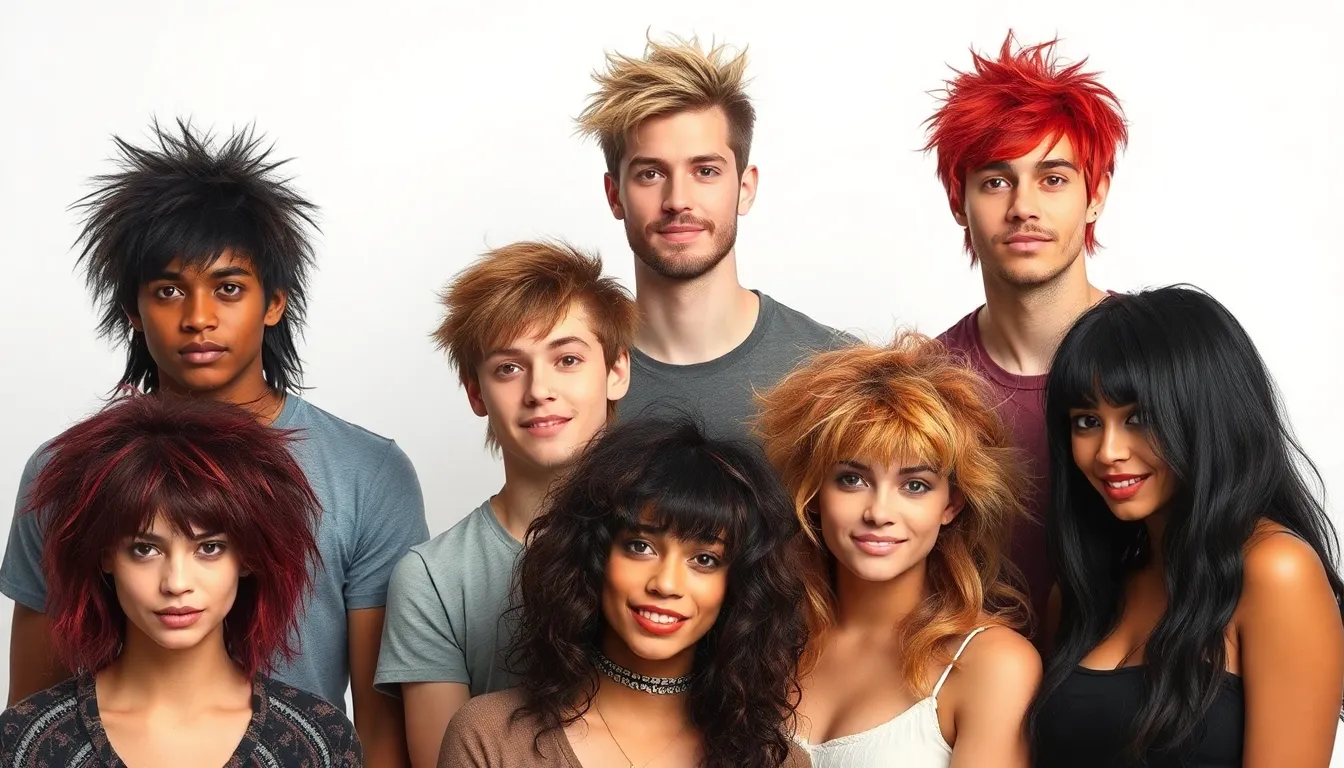
Oval faces benefit tremendously from shaggy mullets because the balanced proportions naturally complement the hairstyle’s asymmetrical length variation. We’ve observed that the layered texture adds dimension without overwhelming the face’s natural harmony. Stylists often recommend this combination since the face-framing pieces enhance cheekbones while the longer back sections create visual interest.
Square faces work exceptionally well with shaggy mullets when the choppy layers soften angular jawlines. We recommend incorporating curtain bangs or side-swept fringe to minimize the width of a strong forehead. The textured movement draws attention upward while the varied lengths break up harsh facial angles.
Heart-shaped faces find perfect balance with shaggy mullets that feature fuller layers around the jawline area. We suggest focusing the volume in the lower sections to counteract a wider forehead and create proportional harmony. The messy texture adds width where it’s needed most while maintaining the style’s rebellious edge.
Round faces achieve stunning results when the shaggy mullet includes longer face-framing pieces that create vertical lines. We emphasize the importance of avoiding excessive volume at the sides, instead directing the texture upward and backward. The length variation naturally elongates the face shape while the layered movement prevents a heavy appearance.
Diamond faces complement shaggy mullets particularly well since the varied lengths balance narrow foreheads and chins. We find that incorporating subtle bangs or fringe helps widen the forehead area visually. The choppy layers add softness around the widest part of the face while the longer back sections create overall balance.
Long faces work beautifully with shorter shaggy mullet variations that add horizontal volume and minimize vertical length. We recommend focusing on creating width through the layered sections rather than emphasizing the traditional dramatic length difference. The textured movement should concentrate around the cheekbones and temples to create the illusion of wider proportions.
Celebrity Shaggy Mullet Inspiration and Style Icons
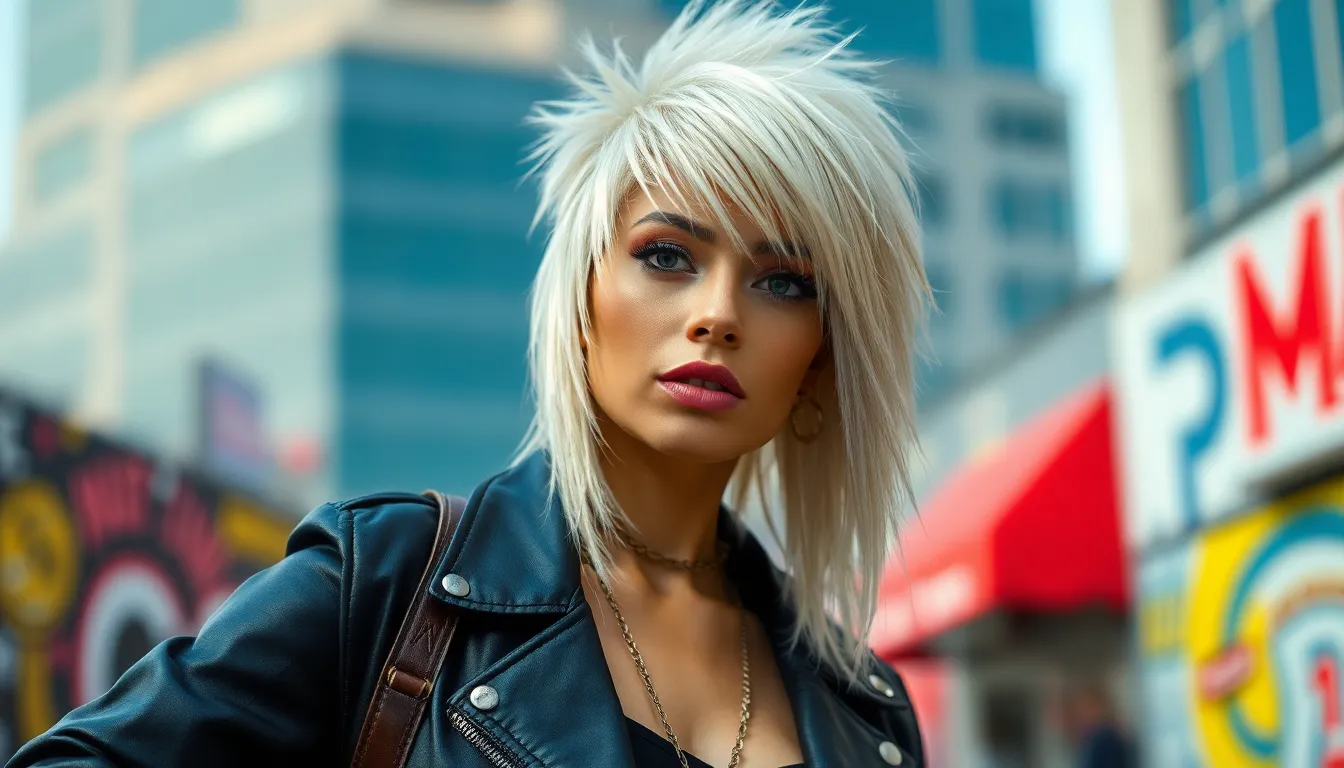
Miley Cyrus leads the charge in modern shaggy mullet inspiration with her signature platinum blonde variation that perfectly balances edgy rebellion with mainstream appeal. Her interpretation features heavily textured layers throughout the crown and dramatically longer sections at the nape, creating the quintessential rock star aesthetic that launched thousands of salon requests.
Billie Eilish transformed the conversation around gender neutral shaggy mullets when she debuted her neon green version during her rise to stardom. The Grammy winner’s cut showcased how bold colors could enhance the natural texture of choppy layers, inspiring fans worldwide to experiment with unconventional hues on their own shaggy mullet styles.
Kristen Stewart continues to champion the sophisticated approach to shaggy mullets through her various red carpet appearances. Stewart’s honey blonde interpretation demonstrates how professional styling can elevate the cut for formal occasions while maintaining its inherently rebellious character through strategic face framing pieces.
Zendaya’s versatile styling approach proves that shaggy mullets work beautifully on naturally textured hair types. Her curly variation emphasizes the importance of embracing natural hair patterns while incorporating the signature length differences that define the mullet silhouette.
Scarlett Johansson’s recent adoption of the shaggy mullet trend brought mainstream Hollywood glamour to the previously underground style. Her ash blonde version features subtle layers and softer transitions, making the look accessible to conservative professionals seeking a touch of edge.
Musicians like Yungblud showcase how the shaggy mullet serves as the perfect canvas for creative expression in the music industry. His frequently changing color combinations and dramatic styling variations demonstrate the cut’s adaptability to artistic personalities.
Social media influencers have amplified celebrity shaggy mullet inspiration through tutorials and styling content. Platforms like TikTok feature countless recreations of celebrity looks, with creators sharing techniques for achieving similar textures and proportions at home.
Red carpet styling teams consistently choose shaggy mullets for their clients seeking memorable appearances. These professional interpretations often feature enhanced volume through root lifting techniques and strategic product application that maintains the style’s signature movement throughout lengthy events.
Fashion week runways regularly spotlight shaggy mullet variations that push creative boundaries beyond celebrity interpretations. Designer collaborations with top hairstylists result in avant garde versions that influence future trends in both professional salons and street style culture.
Common Mistakes to Avoid When Getting a Shaggy Mullet
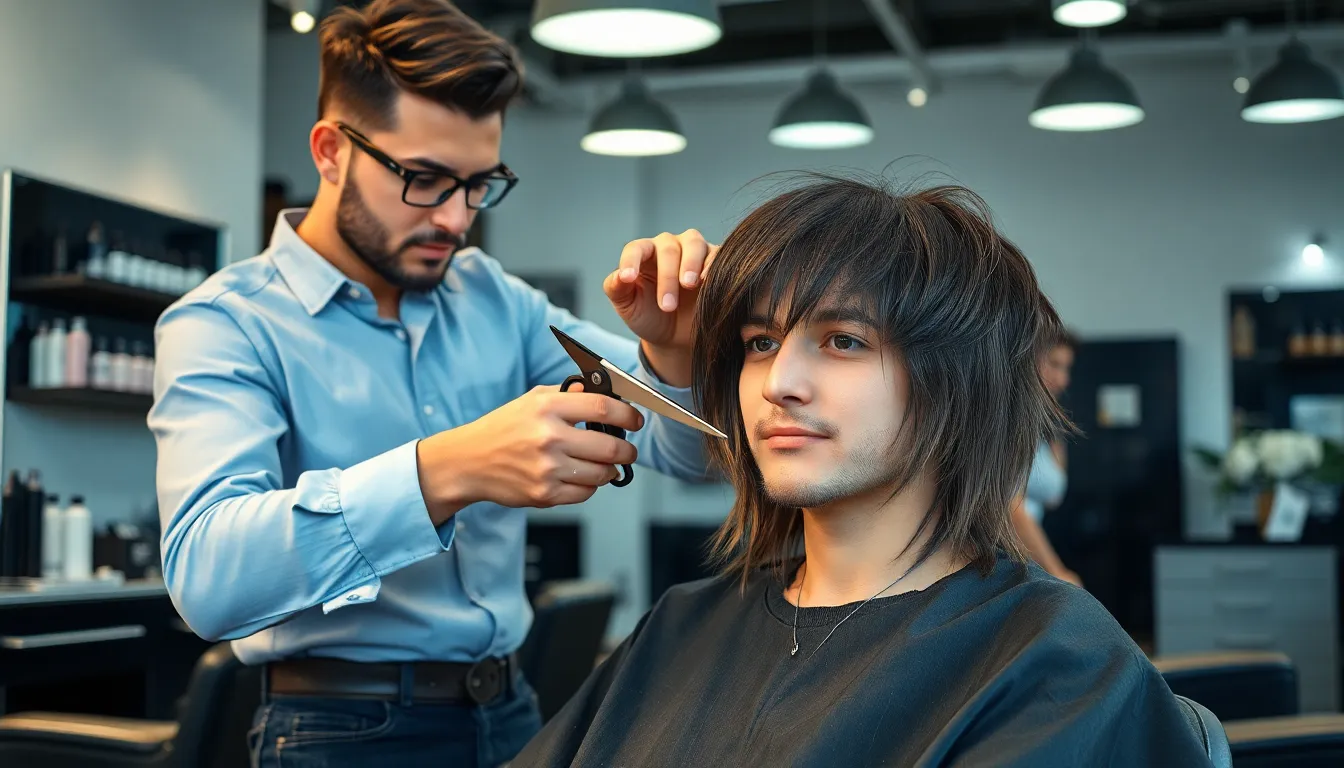
Skipping the consultation phase leads to disappointing results that don’t match your expectations. Many clients rush into the chair without discussing their hair’s natural texture, growth patterns, or lifestyle needs with their stylist. We’ve seen too many people walk out with cuts that work against their hair type rather than improving its natural characteristics.
Choosing the wrong stylist ranks among the most costly mistakes you can make with this trendy cut. Not every hairdresser understands the nuanced techniques required to create authentic shaggy mullet layers and transitions. Research stylists who specialize in modern cuts and have portfolio examples of successful shaggy mullet transformations on social media.
Ignoring your face shape during the planning process creates unflattering proportions that defeat the style’s purpose. Round faces need longer front pieces to create length, while square faces require softer layering around the jawline. We recommend bringing multiple reference photos that show similar face shapes to yours rather than copying celebrity looks blindly.
Requesting extreme length differences between front and back sections often results in an outdated appearance. Contemporary shaggy mullets feature subtle transitions rather than dramatic contrasts that defined 1980s versions. Ask your stylist to create gradual length variations that maintain the rebellious spirit without looking costume-like.
Neglecting hair texture considerations causes styling frustrations that make daily maintenance difficult. Fine hair needs lighter layers to avoid losing volume, while thick hair requires more aggressive texturizing to prevent bulk. Discuss your hair’s natural tendencies with your stylist to ensure the cut works with rather than against your texture.
Underestimating maintenance requirements leads to grown-out disasters within weeks of your appointment. Shaggy mullets demand regular trims every 6 to 8 weeks to maintain their signature choppy layers and prevent uneven growth patterns. Budget for consistent upkeep appointments and invest in quality texturizing products for home styling.
Copying trends without considering lifestyle results in impractical hairstyles that don’t fit your daily routine. Professional environments may require styling versatility that allows sleeker looks, while active lifestyles need cuts that look good with minimal effort. Evaluate your morning routine and workplace requirements before committing to this bold style.
Rushing the cutting process pressures stylists into making hasty decisions that compromise the final result. Quality shaggy mullets require careful sectioning, precise layer placement, and thoughtful texturizing techniques. Allow adequate time for your appointment and avoid booking during busy periods when stylists feel rushed.
Forgetting about color compatibility overlooks how highlights and lowlights can enhance or detract from the cut’s texture. Existing color treatments affect how layers catch light and create movement throughout the style. Coordinate your color and cut appointments to ensure both elements work harmoniously together.
Dismissing professional product recommendations leaves you struggling to recreate salon results at home. Stylists suggest exact texturizing sprays, styling creams, and finishing products based on your hair’s unique needs and the cut’s requirements. Invest in recommended products during your first visit to ensure successful daily styling.
Conclusion
The shaggy mullet represents more than just a hairstyle trend—it’s a statement of individuality that bridges past and present. We’ve seen how this versatile cut adapts to different face shapes hair textures and personal styles while maintaining its rebellious spirit.
As this trend continues gaining momentum through social media and celebrity endorsements we expect to see even more creative interpretations emerge. The shaggy mullet’s ability to work across all demographics makes it a lasting addition to the hair industry rather than just a passing fad.
Whether you’re drawn to its edgy aesthetic or practical versatility the shaggy mullet offers a unique way to express your personality. With proper styling techniques and regular maintenance this bold cut can become your signature look that turns heads wherever you go.
Frequently Asked Questions
What is a shaggy mullet hairstyle?
A shaggy mullet combines the layered, tousled texture of a shag cut with the distinctive length variation of a traditional mullet. It features shorter lengths in the front and sides with longer lengths in the back, creating choppy ends and feathered sections for a natural, effortless look.
Why is the shaggy mullet trending now?
The shaggy mullet’s popularity is driven by social media platforms like TikTok and Instagram, where influencers showcase various interpretations. Celebrity endorsements from Miley Cyrus, Billie Eilish, and Kristen Stewart have normalized the look, while its gender-neutral appeal attracts diverse demographics.
What face shapes work best with shaggy mullets?
Shaggy mullets work on various face shapes. Oval faces benefit from balanced proportions, square faces are softened by choppy layers, heart-shaped faces gain balance with jawline volume, round faces appear elongated with longer pieces, and diamond faces are balanced by varied lengths.
How often should I trim my shaggy mullet?
Schedule trims every 6 to 8 weeks to maintain the shape and prevent uneven growth. Those with fast-growing hair may need more frequent mini sessions. Regular professional touch-ups are essential to preserve the signature messy layers and overall style integrity.
What products are essential for styling a shaggy mullet?
Essential products include texturizing sprays for natural movement, lightweight styling creams for definition, and dry shampoo for volume and oil control. Apply products to slightly damp hair and use scrunching motions to enhance natural texture while maintaining the rebellious charm.
Can I get a shaggy mullet with curly hair?
Yes, the shaggy mullet works excellently with curly hair. The natural texture enhances the style’s messy, layered appearance. Curly shaggy mullets require specific cutting techniques to work with natural curl patterns and may need specialized products for curl definition and frizz control.
What’s the difference between classic and modern shaggy mullets?
Classic shaggy mullets feature more dramatic length differences and sharper contrasts between front and back. Modern versions have softer transitions, subtle layering, and advanced texturizing techniques. Contemporary styles often incorporate balayage highlights to emphasize texture and depth.
What mistakes should I avoid when getting a shaggy mullet?
Avoid skipping the consultation phase, choosing an inexperienced stylist, and ignoring face shape considerations. Don’t request extreme length differences or neglect maintenance requirements. Consider lifestyle compatibility and ask for professional product recommendations to maintain salon-quality results at home.

